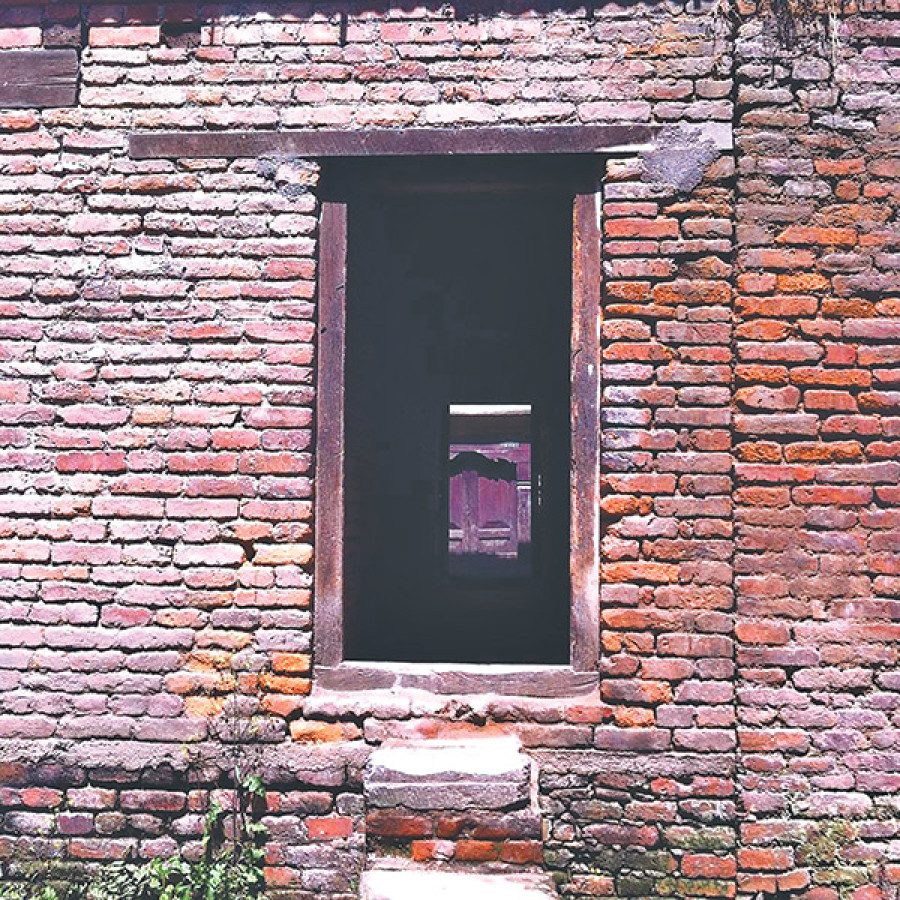Miscellaneous
The streets that made us
I have always been a galli person. These dark, narrow, capillary-like alleys—flanked by walls made of old bricks and with doors made of aged wood—have always enchanted me.
Shuvechchhya Pradhan
I have always been a galli person. These dark, narrow, capillary-like alleys—flanked by walls made of old bricks and with doors made of aged wood—have always enchanted me. They are damp and slippery with algae and often dirty and pungent, yet they boast a neat sense of orderliness that wider streets and bigger roads of the Capital fail to.
They are ghusghusiyas, a friend once philosophised; you never know what they are up to or where they will lead you. These gallis, spread across the older, historical parts of the Valley, sometimes open up to an airy chowk and other times just dead-end at a small and sheltered nani. Gallis, like the proverbial rabbit hole, are complete mysteries; you never know what joys or nightmares lurk inside.
When I was little, I walked these alleyways of Kathmandu, holding my mother’s hand. We’d walk from a backdoor in Asan towards small, dark alleys that opened up to Bangemudha. And we’d walk from Bangemudha, turning left and then right through various chowks, and ‘poof!’ suddenly we’d be in Indra Chowk. To an impressionable child’s mind, these gallies were not merely pathways; they were portals that could transport you to far-flung toles in a heartbeat.
As I grew old enough to venture out alone during my school breaks, I walked the gallis of Bhaktapur. I’d take the dark, long, narrow paths—a new one every other day—that took me to the Durbar Square or to Tekhacho Tole. These gallis that smelled of thwon all the time, always found one another. They were more intricate and intimate than those in the other two towns in the Valley, something I’d learn only later in life.
Once I became an adult, I would find myself in the gallis of Patan with a lover or a friend. At the time, I took these alleys without a need for direction or a sense of purpose. These gallis were always about stumbling over a fantastically carved window, about finding a house to muse over or chancing upon an open chowk to sit down and talk about life. These gallis were about games: a spontaneous direction to take, a random decision to make and self-made mazes to lose ourselves in.
As I walk through these gallis today, I am no longer buoyed by the lightness that the activity would once bring; instead a heavy feeling of despair is all-enveloping. With Kathmandu’s landscape morphing, the gallis and chowks are disappearing faster than ever before, taking with them memories and secrets wrought over centuries.
Sometime last week when I found myself at the Dunchhen Tole, opposite to the Paltan Chhen in Balkumari of Asan, I couldn’t recognise the place anymore. The traditional Newar houses that once stood tall have now brought down and not by the 2015 earthquake. On asking around I learned that a large commercial complex was replacing this once dense residential tole. Same is the case with Dambo Chuka in Kilagal where a proposed house-pooling project, approved by the Kathmandu Metropolitan City, will eventually swallow up any vestiges of the traditional. But while the fact that we are losing places with important architectural, cultural and historical importance disturbed me; the realisation that the gallis that led to these houses would too soon disappear made more forlorn.
While alarming, this, is not a new phenomenon. Suraj Arcade at Makhan, for instance, is a howling example of what a modern complex does to traditional neighbourhoods. Growing up, we never really realised that our favourite stop for shopping was once filled with gallis, chowks and houses with tiled roofs and intricate bay windows. In the few decades that the Suraj Arcade has come up, no traces of what stood in its stead remain.
Similar would have been the fate of Paltan Chhen—a property in Asan built by Kazi Abhiman Singh Basnyat in 1832 BS as a tribute to the platoons who contributed to the usurping of Kathmandu—had it not been preserved by the Heritage Act. According to Basu Krishna Baidhya, who runs an Ayurveda shop in the building, four out of the seven chowks around the building have already been destroyed. The last three remain only because they are no longer private property and can’t be sold.
Civilisations, and cities by extension, are continually evolving, forever morphing into something new. And Kathmandu undoubtedly has changed many folds over the past millennia. So, it perhaps would be foolish to hold on to the notion that everything must remain as is. Yet, on losing traditional settlements, and the capillary-like gallies that are the lifeblood of the old town, we risk losing the very essence of Kathmandu itself. What would this Valley be, I shudder to imagine, were it just concrete matchbox structures.




 13.12°C Kathmandu
13.12°C Kathmandu








%20(1).jpg&w=300&height=200)

